Introducing Lithos: Carbon removal using the power of enhanced rock weathering
Lithos transforms farmland into carbon capture centers
To reach net-zero emissions, experts agree that we’ll not only need to massively reduce but also remove emissions from the atmosphere to the tune of 10–15 billion tons a year by 2050. That’s 2–3x the USA’s annual emissions. This is an absolutely massive scaling project, and humanity is only 0.006% of the way there. Many existing carbon removal solutions are either infrastructure-heavy or costly, making it hard to implement them as wide or as fast as required.
That’s why Chris, Noah, and I are excited to introduce Lithos: permanent carbon removal built for growers and global impact. We started Lithos because the climate crisis can’t wait. Our technology uses rocks to efficiently trap carbon while enhancing crop health. We’re well beyond R&D — after a decade of our cofounders’ research on this solution, we’re scaling rapidly and cost-effectively, and we’re scaling now.
Since incorporating the company in March 2022, we’ve deployed over 11,000 tons of carbon-removing rock. In just 7 months, we are on track to capture 2,000+ tons of CO₂ (and measure it empirically)! We’re working with worldwide agricultural leaders, including Yara International’s Agoro Carbon Alliance, whose first acres of basalt rock powered by Lithos will go live this Fall. We are not only one of 5 carbon removal technologies across the world selected as carbon suppliers to Frontier Climate’s inaugural batch—we are also Frontier’s largest supplier of removals, at 640 tons.
Best of all, we do this while making a significant impact on the lives of rural communities and growers.
Lithos is the greek word for “rock” — the material we are inspired by.
How do we capture carbon?
Rocks are nature’s method for carbon removal.
Rock weathering isn’t something that most people think about every day (unless you work at Lithos). But it’s one of the most vital parts of the Earth’s carbon cycle — and one of the reasons that the Earth doesn’t look like Venus. Scientists have known about this cycle for half a century:
Natural rainwater is slightly acidic, because carbon dioxide in the atmosphere naturally “carbonates” it.
When rainwater falls on exposed silicate rock around the world, it reacts and dissolves the rock, kicking off a chemical process that traps the CO₂ as bicarbonate. In this form, it remains permanently locked away from the atmosphere.
It makes its way into the oceans where it supports corals and shellfish and counteracts ocean acidification, and ultimately turns into solid limestone under the ocean floor.
This natural process is estimated to draw down around 1.1 billion tons of CO₂ every year. The idea of enhancing this process was first proposed about a decade ago.
Combining the best of science and nature, Lithos is scaling it now.
The Lithos method: We use rocks to remove carbon in human seasons, rather than over geologic millennia.
With a world-class team leveraging expertise in soil chemistry, agronomy, geochemistry, machine learning, and logistics, we are engineering the most cost-effective and scientifically rigorous solution to the climate crisis1.
🌋 Natural and sustainable. We deploy an abundant, nutrient-rich volcanic rock called basalt. Our platform upcycles existing, post-industrial stockpiles where basalt has already been crushed down to a fine dust. We revitalize non-salable product to improve the bottom line at our quarries.
🌽 Reliable. We work with growers to spread and fine-tune each field for guaranteed crop performance. Rather than relying on guesswork, our solution is built on a rock-solid decade of research + ground-truthing for pH regulation. Lithos replaces 100% of a field’s aglime. We reduce reliance on fertilizers that fluctuate wildly in price. Our system prioritizes farmer peace of mind.
🚀 Rapid. In exposed natural rock, this process takes thousands of years. On average, enhanced weathering via dust still takes 15–50 years. Lithos slashes the wait for carbon removal. We optimize field-by-field. We capture ~70% of the carbon in year 1 and the rest in a couple growing seasons.
✅ Flexible. In our years of research we found that countless parameters complicate reaction kinetics — even between parts of a single farm. Our platform is trained against real-world data to speed removal while guaranteeing crop performance. The platform slots into growers’ existing practices2 with no change.
♻️ Regenerative. Our system can increase crop health, regenerate topsoil, and enhance plant resilience to pests and droughts. We reduce overall resource usage and have seen crop yield improvements of 5–40% at our partner farms.
Agriculture is responsible for ~24% of global emissions. Lithos provides permanent, verifiable sequestration of atmospheric CO₂ while decarbonizing agriculture — and transforming our food supply.
Direct, empirical measurement of real carbon removal.
At Lithos we believe that scale and reliable quantification go hand-in-hand. Measurement is key to high-quality credits. It’s becoming clear that the nascent CDR market needs the best available measurement from the beginning. Here’s how Lithos approaches it:
🌎 Directly measured, farm-to-ocean. With the best tools in the field, we physically measure the extent of the chemical reaction from soil samples, rather than relying on low-accuracy, water-based measurements of alkalinity. After validation of carbon capture, our science team then tracks it through rivers and to the ocean, where it remains permanently trapped. We report this from cradle-to-grave so our buyers can be confident in their purchase.
🎯 We don’t just simulate results — we measure them. We credit the carbon removal after direct measurement, not before. ERW can be hard to quantify — but we are tackling it with state-of-the-art science.
We’re working on publishing our direct measurement protocol this year, and are excited to advance best practices in ERW.
We are working to move at a speed the crisis demands. Cost and scalability are major considerations for any carbon removal technology — and we are already permanently removing carbon for about 1/5 the cost of other methods available today.
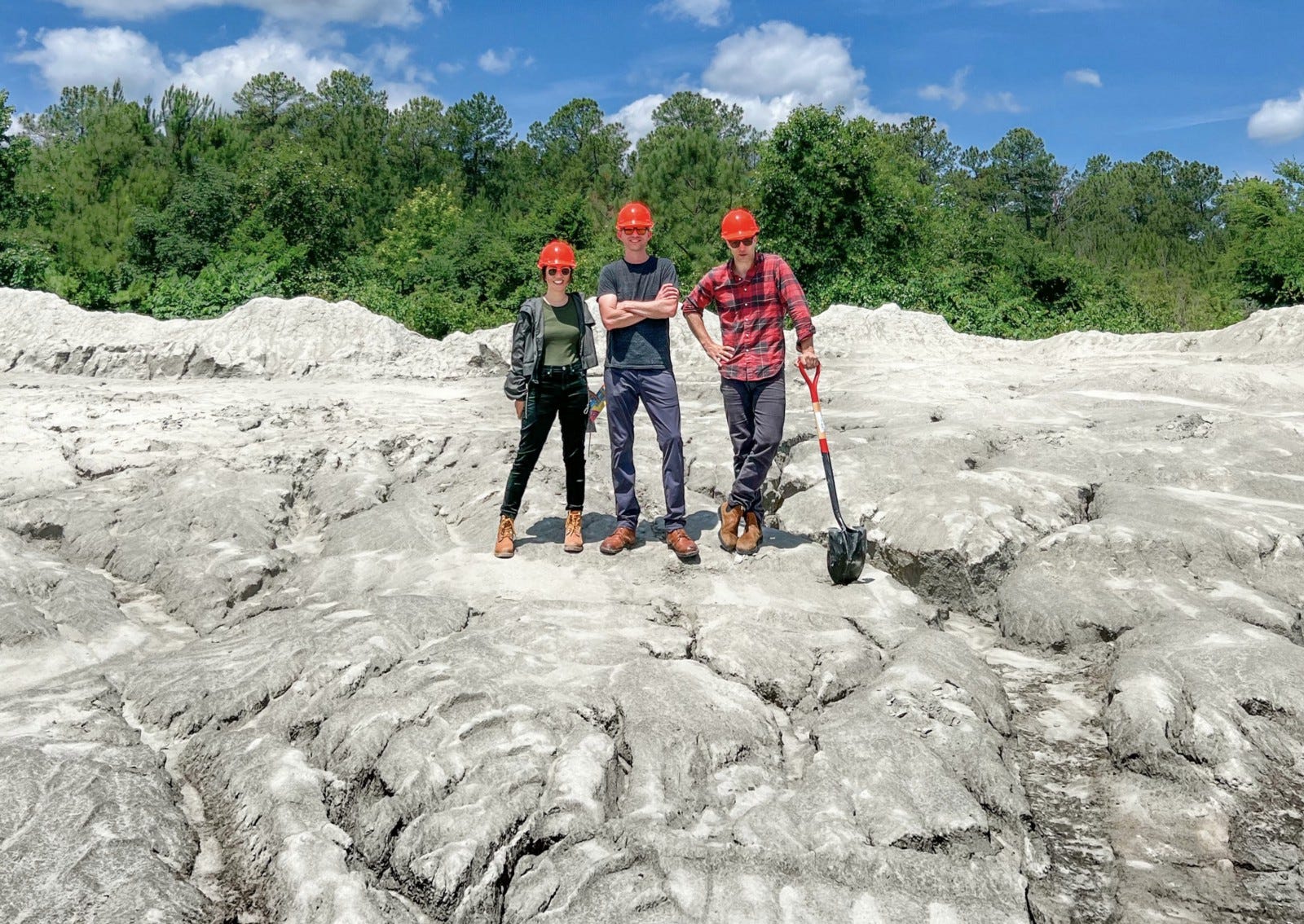
Speed + Quality
In March 2022 we finished sourcing initial feedstocks and began to get significant inbound traction from farmers and agricultural co-ops.
By April, we had signed up dozens of farmers with our precision optimization platform, with many more on our waitlist.
In May, we raised a $6.3 million seed round led by Union Square Ventures and Greylock Partners, with participation from Bain Capital Ventures and leading climate and agriculture funds including Carbon Removal Partners, Fall Line Capital, Cavallo Ventures, and Carbon Drawdown initiative. For both Greylock and BCV this represents their first climate startup investment.
Over the winter, we’ll be announcing exciting policy, partnership, and scientific innovations to drive the field forward responsibly.
By this time in 2023, we plan to have over 5,000 new acres live and to be capturing (and measuring!) 10,000 tons of CO2 that year. If we can scale up 5–10X every year, we would be able to remove a billion tons of CO2 by the end of the decade.
We feel incredibly grateful for the support we’ve gotten from the climate and scientific community. We know that this moonshot will take immense collaboration — we’re humbled to unleash carbon sequestration at scale using the power of rocks + responsible science.
With enough luck, we’ll work together to put climate change on the rocks.
Solving the climate crisis will require urgent action across many parts of our global economy. If you are interested in carbon projects, land partnerships, policy conversations, carbon credits, or the capabilities of our R&D platform, we encourage you to reach out at team@lithoscarbon.com. If you’d like to join our mission—we’d love to talk!
Our scientists trained at Yale University, Georgia Tech, the University of Chicago, Columbia University, UT Austin, and Caltech, and have >17,000 citations between them. Scientific rigor is at the core of everything we build.
America has over 340 million acres of corn, soybean, and other cropland, and all these farms are already equipped with rock dust spreaders. Lithos can scale fast because we leverage existing farming infrastructure.






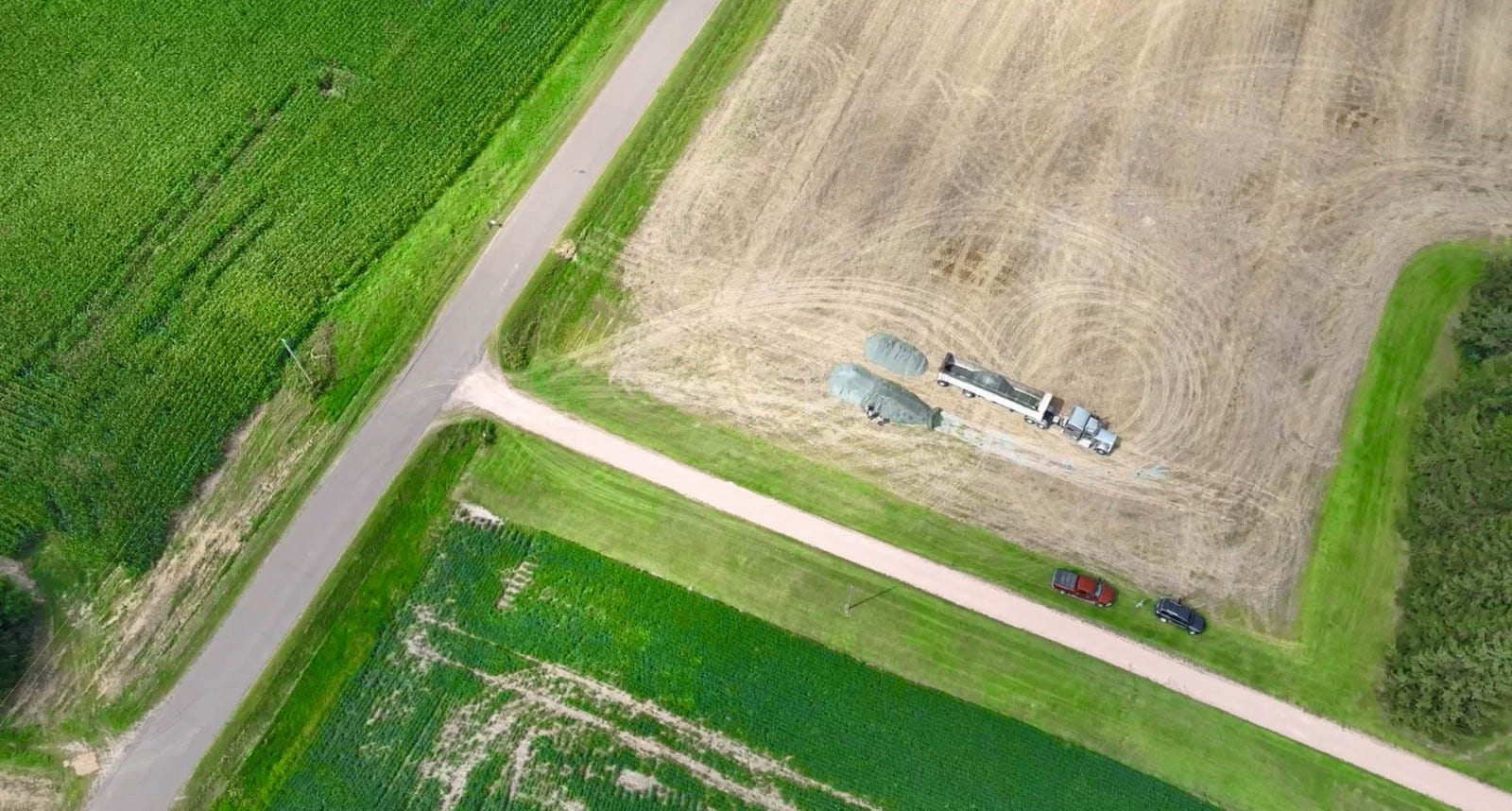
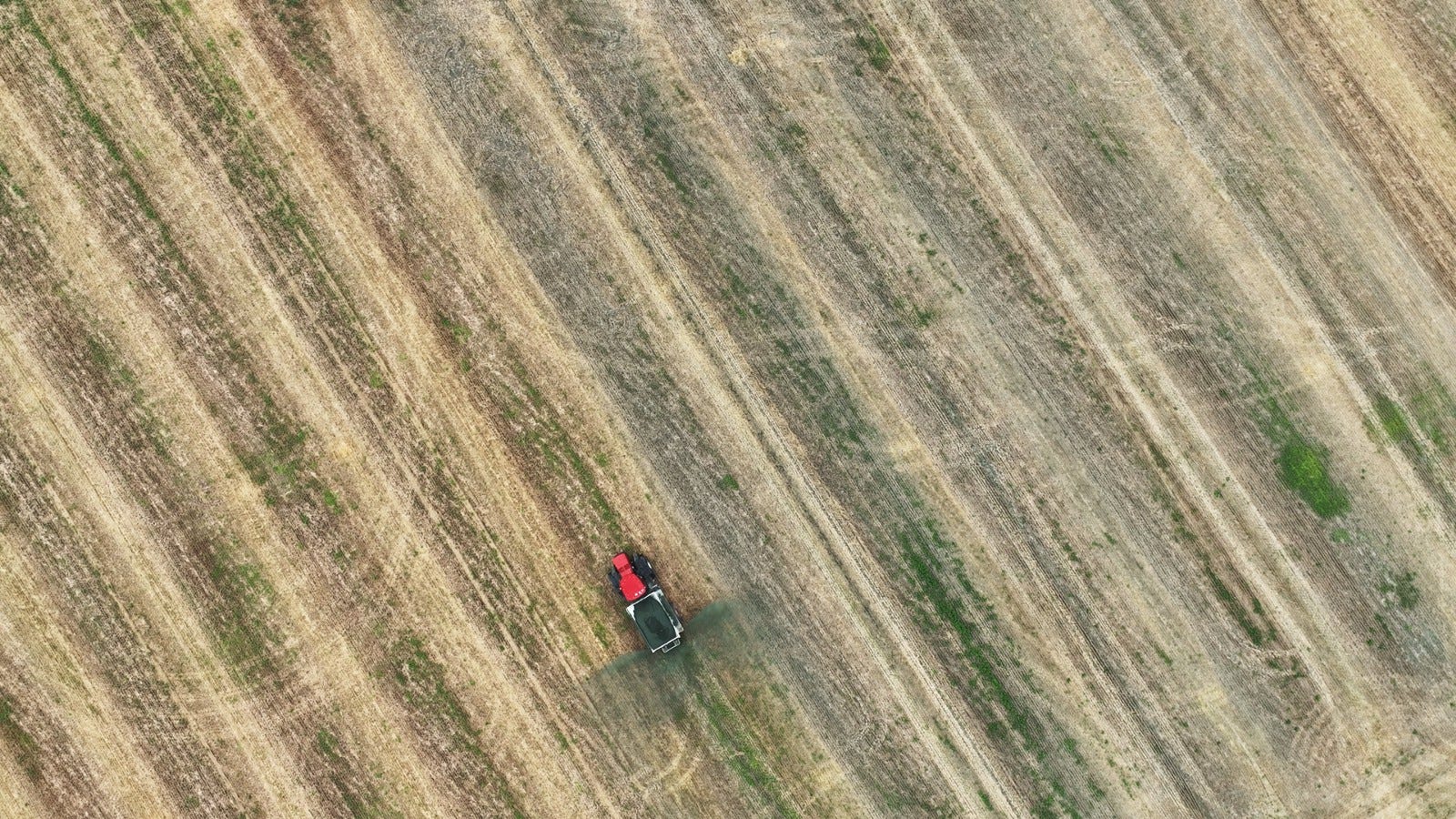
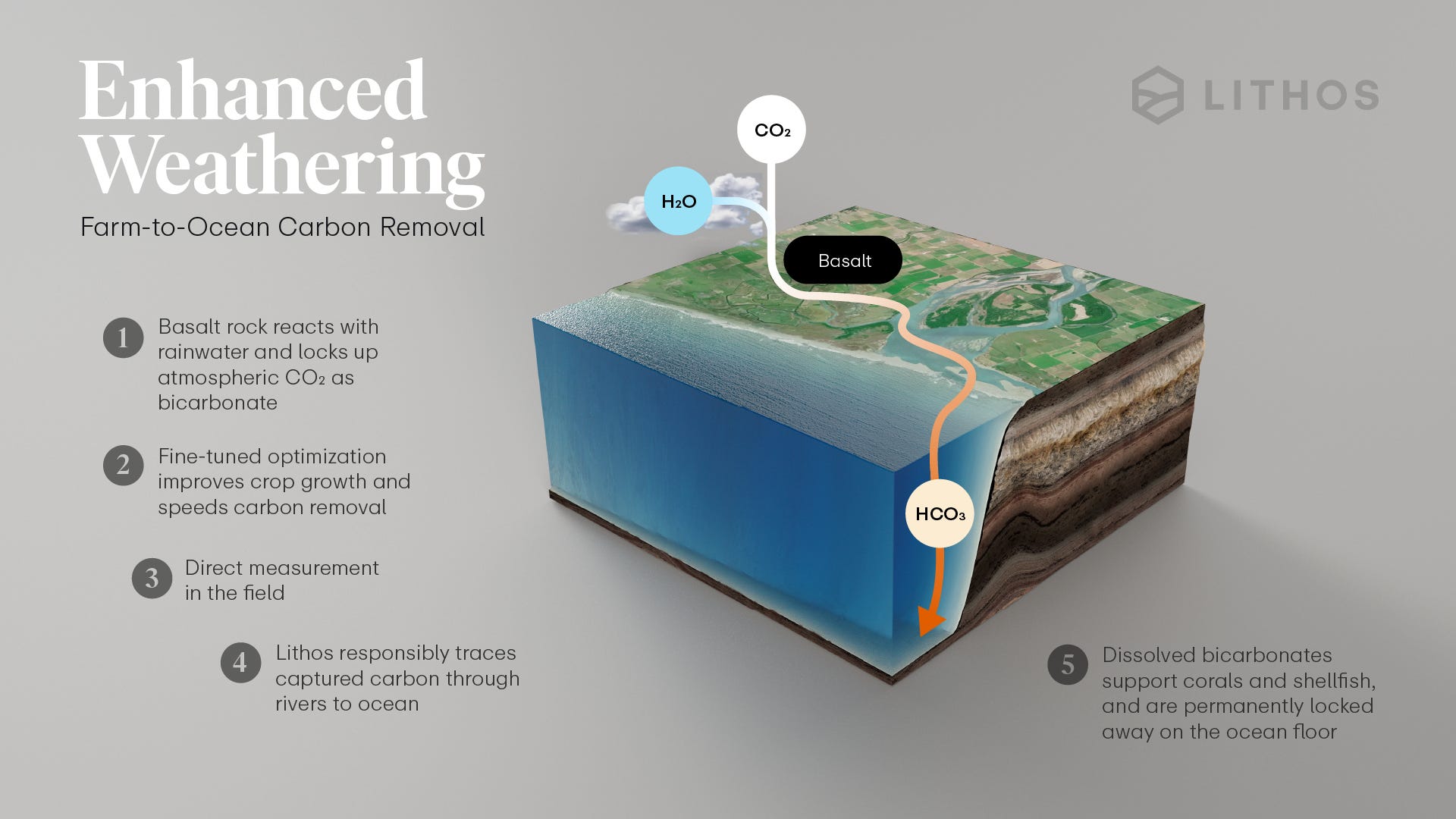
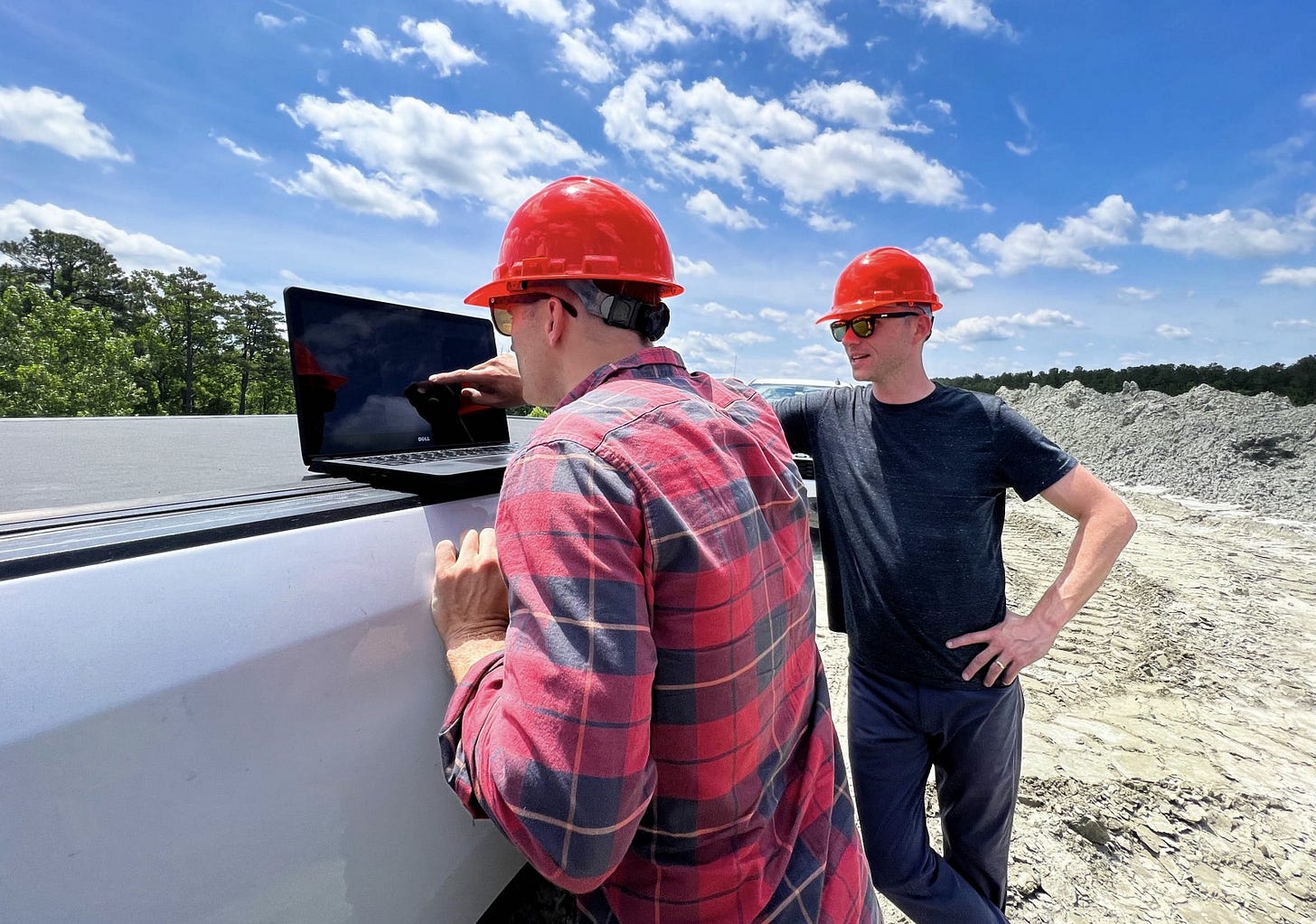

well not all the farms have spreaders, some still use anhydrous ammonia, but I think that is going away based on events of late. compaction is a big concern on my farm. also labor and time to do this. does it matter spring or winter application? Wondering about ideas for how to handle those issues
Aside from basalt, have you considered other sources such as hi-mag materials like magnesium silicates? I'm sitting on a substantial reserve of "synthetic olivine" in Southern Oregon.